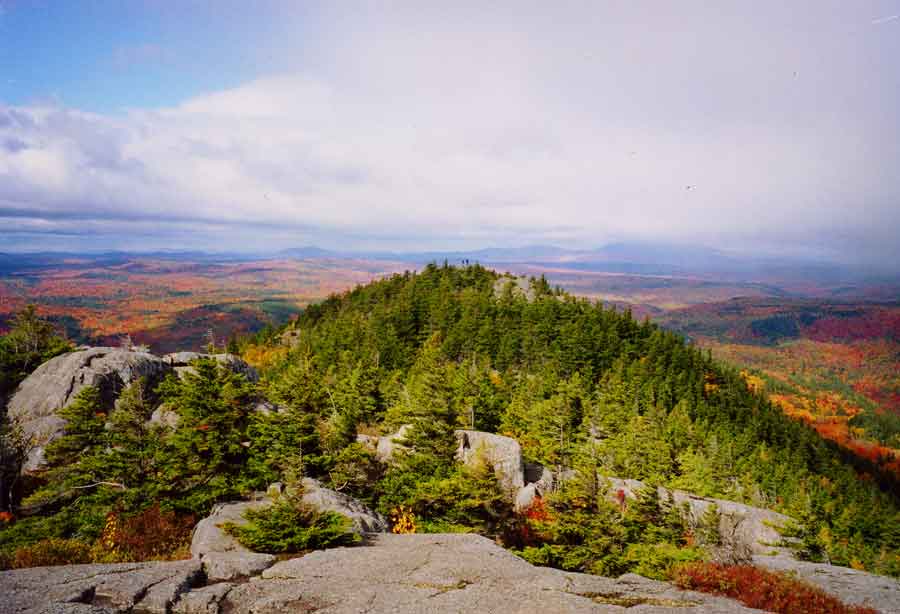
Borestone Mountain is a 1981-foot peak contained within a Maine Audubon sanctuary. It is a local favorite for family hikers. Two-thirds of the hike follows an easy hiking trail or dirt road. American redstarts are often apparent in the parking area.
Because Borestone has been protected for over 100 years, the mature hardwoods that envelope the first third of the trail are particularly good for canopy birds such as red-eyed vireos, scarlet tanagers, blackburnian warblers and northern parula.
The vegetation changes gradually during the ascent, leaving behind the maples, and embracing birches and beeches. Here, blue-headed vireos, and magnolia, black-throated blue, and black-throated green warblers quickly become commonplace, with a good chance for ruby-crowned kinglets. Then, as the hardwoods mix with stands of evergreens (mostly red spruce), more hermit thrushes, golden-crowned kinglets, and winter wrens become noticeable. The usual chickadees, nuthatches and woodpeckers are always around.
The trail plateaus upon approach to the visitor center. The thicker evergreen forest is home to Canada warblers. Northern goshawks are seen occasionally. In winter, during irruptive years, an astounding number of crossbills can be heard chattering throughout this section.
Audubon’s visitor center is two thirds of the way up the mountain, adjacent to one of the three mountain ponds. The three ponds are pleasingly known as Sunrise Pond on the near right, Sunset Pond out of sight on the distant left, and, of course, Midday Pond in the middle. The water in these ponds is so clear it is possible to see 50 feet below the surface. There are occasional common mergansers in the ponds, but the harsh alpine climate supports little aquatic life, so ducks are uncommon.
To ascend the rest of Borestone Mountain, follow the trail around the visitor center. The ascent is strenuous and will require some clambering over boulders, but the view is spectacular, especially in foliage season. Aside from more winter wrens, hermit thrushes, and white-throated sparrows, the birding is ordinary to the summit, but the 360-degree views from the top make the hike worthwhile.
The road on the way to Borestone Mountain is pleasantly birdy. Stop at the Wilson Stream bridge and enjoy the barn swallows that nest under it. A mile later, stop and spend a few minutes at the railroad tracks. The trees are full of red-eyed vireos, and with a little more patience, scarlet tanagers may reveal their presence. It’s not unusual for sharp-shinned hawks to cruise the rail line. This is an active track, so beware of trains.
Directions: Just after passing through Monson, bear right onto the Elliotsville Road. Follow 7.5 miles to Big Wilson Stream Bridge. Turn left at intersection and follow signs another mile to Borestone parking lot. Parking is at the base of the mountain. The lot fills early on nice days so you may have to join the others parked along the roadside.
Guilford, ME 04443
GPS: 45.378196, -69.429731

